In Bloom In June…
In Bloom In June…
and what it means for YOU!
June is an amazing month on Cape Cod. The landscapes are lush green, and many trees, shrubs and perennials are in bloom. But early summer near the sea often starts off damp and cool, leading to assorted problems, and many of our customers have questions about what to do with June-bloomers after they finish flowering. Here is a roundup of some plants that are blooming, and answers to the questions you have about their care.
The Kousa Dogwoods!
As you drive around the Cape you’ll undoubtedly notice that most kousa dogwoods (Cornus kousa) are looking spectacular this year. Many of people wonder if this has anything to do with the past winter, and the answer is no. Kousa dogwoods typically have a year when they make an abundance of flowers and fruit, followed by a year or two with reduced blooming. This is normal for many trees. So enjoy the flowering of your dogwood, but know that you’re likely to see fewer blooms next year.
If your dogwood isn’t flowering well this year, ask the following: “Was this tree planted recently?” Newly planted dogwoods often take up to five years to flower well, since they are getting their root systems established. “Was this tree cut back in the past nine months? The flower buds on kousa dogwoods form in the summer, so any pruning after mid-summer removes the flowers for the following year.
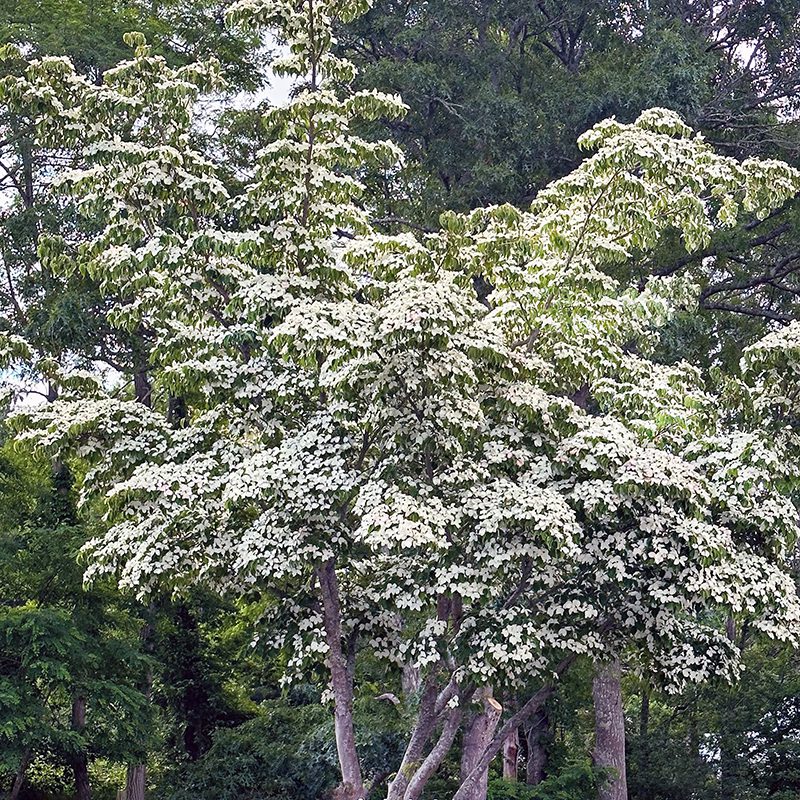
Weigela and Beauty Bush
Two of the shrubs that flower in June look similar, and are treated in the same way. Weigela (Weigela florida) and beauty bush (Kolkwitzia amabilis) both have tubular flowers that attract people and hummingbirds. Some varieties stay shorter, but many grow large making them good choices for mixed-shrub borders and privacy plantings. These are shrubs that look best if they are not sheared, but only pruned to remove deadwood and crossed or odd branches. Any pruning should be done immediately after the shrubs finish flowering.

Pink Spirea
There are many wonderful varieties of Spirea japonica that flower in June. Some have colorful foliage, and many are smaller shrubs that are well-suited to our landscapes. They also make great cutting flowers and combine well in bouquets. After these white or pink flowers start to turn brown, deadhead them by cutting below the fading bloom, or shear the entire shrub back by 3 to 5 inches. This removes the brown flowers, gets rid of the seeds so that seedlings don’t run amuck in your yard, and prompts the shrub to make fresh growth and even a few more flowers later in the summer.
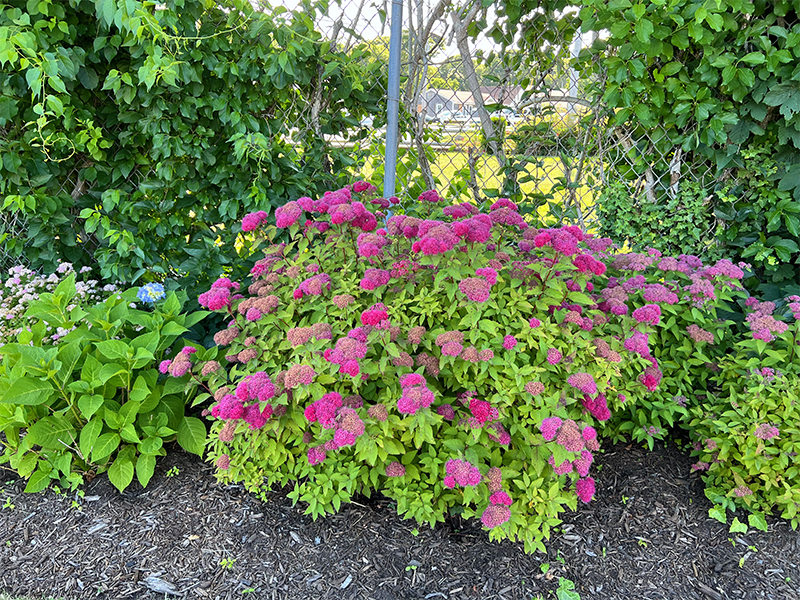
Smooth Hydrangeas
Our native smooth hydrangeas (Hydrangea arborescens) are coming into bloom. There are many varieties of this plant to choose from, including the white-flowering Annabelle or Incrediball, the pink Garnetta and Invincebelle Spirit II, and assorted smaller types like Limetta, Mini-Mauvette, and Wee White. Since smooth hydrangea flowers last for a long time, and are even attractive as they age, no deadheading or pruning is necessary on these plants as the summer continues. Since these plants spread by suckering to the sides, if your shrub is outgrowing its space you can cut those side shoots off or dig them and transplant elsewhere in the fall or next spring.
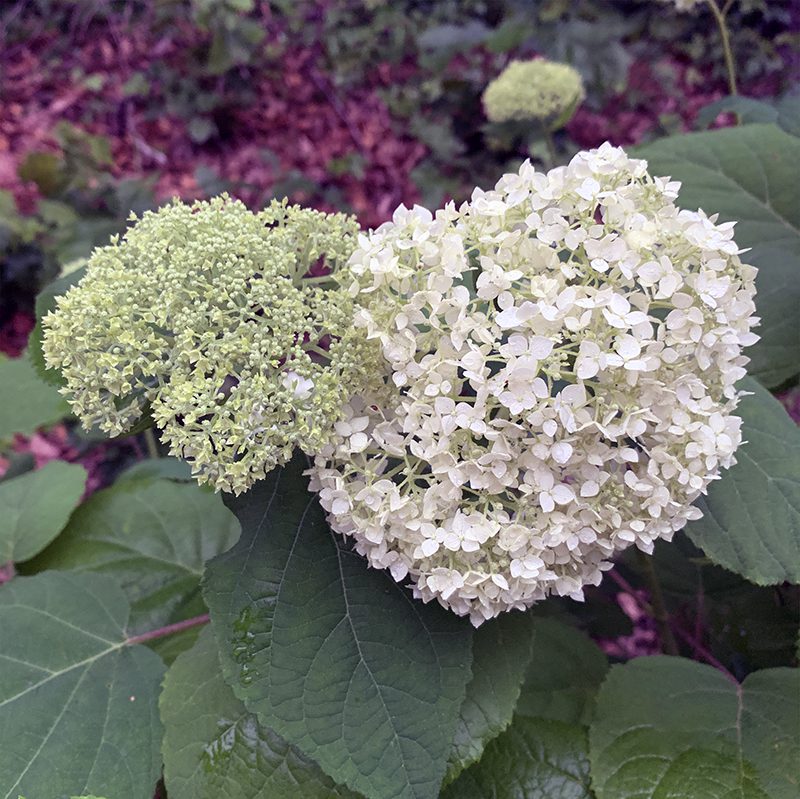
Peonies
The peony (Paeonia varieties) is a beloved perennial that is highly anticipated for June flowering. After these plants finish blooming, clip the developing seed heads off, especially if the flowers had bent the stems to the ground in a heavy rain. This does not stimulate more flowers, but most of the time the foliage on these plants is attractive for the rest of the summer.
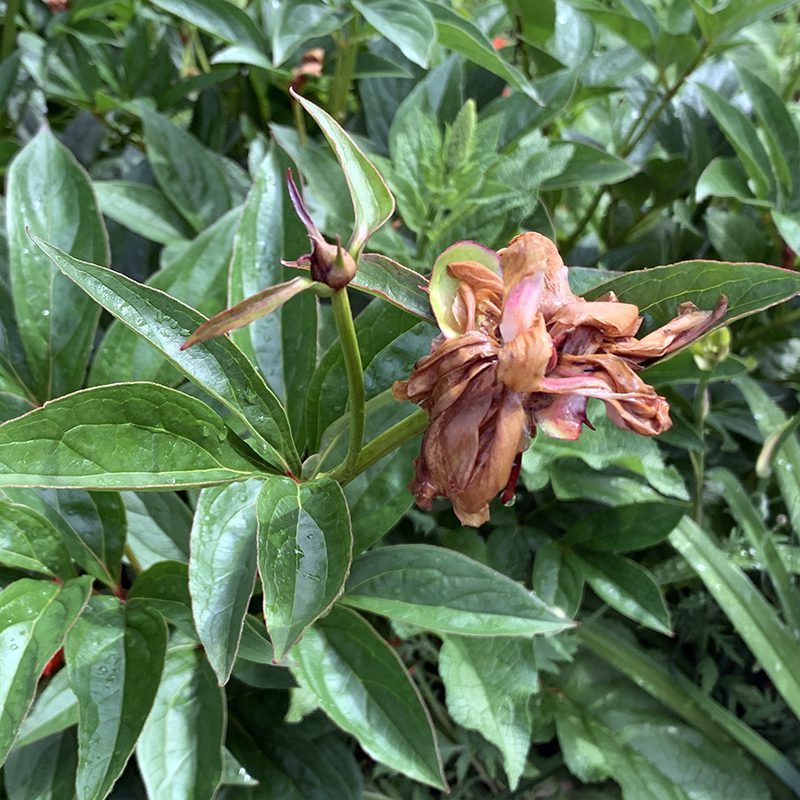
Catmint
A perennial that’s the star of the June flower show is catmint (Nepeta). The flowers begin to open in May and the plants are a mound of lavender-blue flowers all June. Toward the end of this month the flowers fade, however, and there are several possibilities for the treatment of this plant at that point. You can leave it alone; it looks nice enough for the rest of the summer. You can shear it into a ball with hedge trimmers or a shearing tool; this produces some new growth and makes the plant look like a formally pruned small shrub. Or you can cut the faded flower stems to the ground, leaving the newest foliage that you see at the base of the plant. When you cut the plant all the way down, new growth is stimulated and within a couple of weeks the plant is back with fresh leaves. With any of these three approaches your catmint will produce a few random flowers for the rest of the summer, and these make the bumblebees happy.
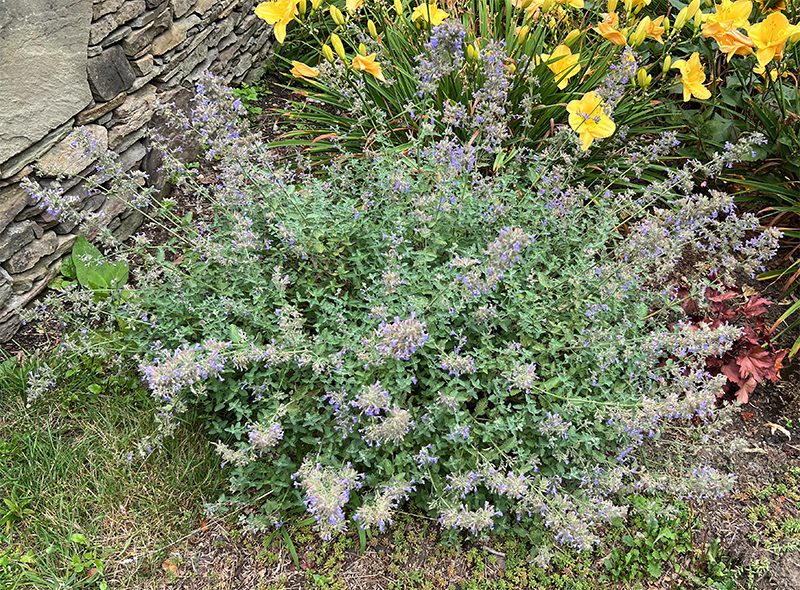
Foxglove
These plants, Digitalis purpurea, are a June-flowering favorite. They are biennials, not true perennials. Biennials grow one year, bloom the next, and then they die. So if you love them, you’ll want to let several stalks go to seed after flowering is finished, and you’ll want to learn to recognize the small, new plants that will appear in May. Those small plants are in gardens now, in June, and they range from a very small inch or two wide to six or even eight inches tall. Note that foxglove seedlings are easy to transplant, and that can successfully be done now, in early September, or in April next year. If you want your foxgloves to self-seed, don’t mulch in the area where they are growing. Mulching covers the seeds and prevents them from germinating.
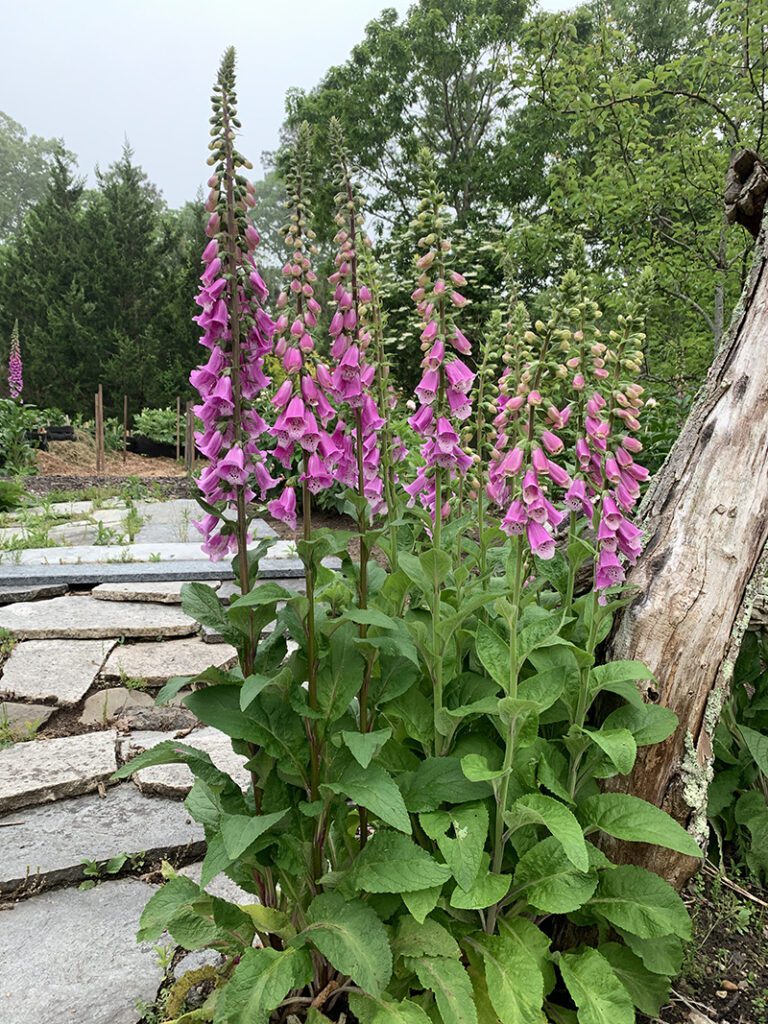
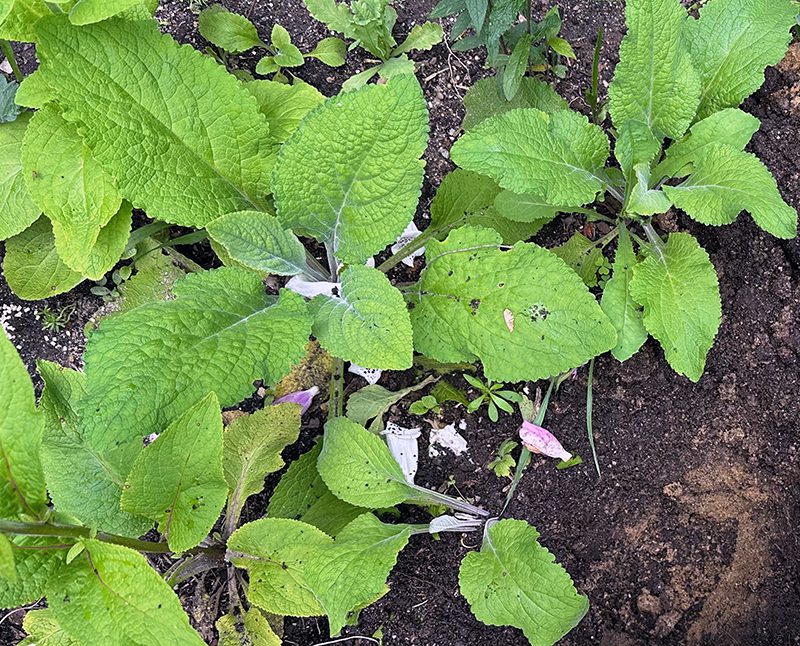
Ladies’ Mantle
I’ve always appreciated that the lime green flowers on ladies’ mantle (Alchemilla mollis) are in the garden at the same time as the pink peonies and purple Penstemon, since their flowers go so beautifully together in bouquets. Once the Alchemilla flowers start to turn brown, however, they don’t look good in the garden. In order to improve the appearance of your perennial garden, cut the fading flower stems off. But if you want more ladies’ mantle plants, leave a few stems to go to seed because this plant is a good self-sower. For this reason, ladies’ mantle can make a good ground cover in part-shade gardens or on shady slopes. It’s one of the perennials that is happy to grow in and around rocks, so it can be nice when planted near stepping stones. Ladies’ mantle makes a good companion plant for Hosta and as a “socks and shoes plant” around hydrangeas.
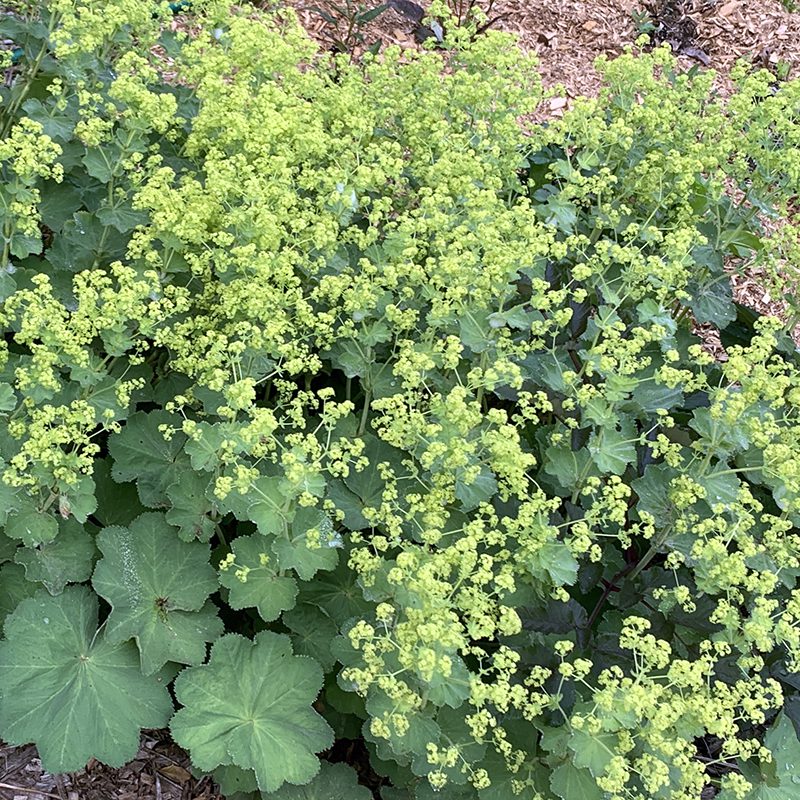
Veronica and Salvia
Two favorites for June flowering in perennial gardens are varieties of Veronica and Salvia. There are assorted pink and purple shades of each of these plants, but the deep blue or purple is the most widely planted. Once these plants finish, both varieties can be deadheaded by chopping off spent flowers with pruners or hedge trimmers, or even cut low to the ground. Choose the method that works best for you and your garden. Salvia will sometimes come back with a few new flowers later in the summer, but it’s the June bloom that is the most striking.

Roses
Some varieties of roses have been in bloom since the beginning of June, while others are just beginning to open their flowers. Although the shrub roses don’t have to be deadheaded (the word we use for cutting off the finished flowers), most are improved in appearance if you do so. You can clip off the faded flowers stem by stem, or do it with a hedge trimmer for faster pruning. Ignore that old myth that you have to make the cut above a set of five leaflets – it isn’t true!
Note: the wet, cool weather we’ve experienced this June has led to blackspot, mildew and rust on many rose plants. Spray your plants now with a fungicide such as Neem Max to help slow any early infections.
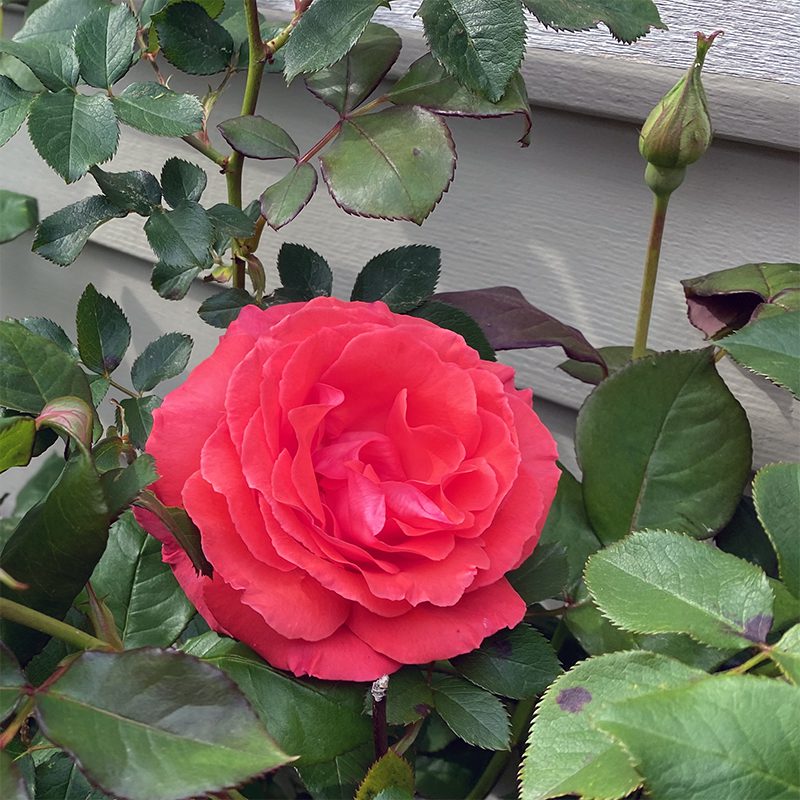
A Fragrant, Nuisance!
I’m ending this with Rosa multiflora, an invasive rose that perfumes the Cape in June. When I walk my dog in wooded areas or stroll in my own yard, I’m delighted by the fragrance. But this small pleasure aside, the plant is a problem. It infests our conservation areas and our own landscapes. The birds deposit the seeds under our trees and shrubs, where the resulting small seedlings often escape our notice. The next thing we know, our landscape plants are filled with the thorny vines. June is your best window for seeing these plants because the flowers are so visible. When you notice them, chop off the canes at ground level, fragrant flowers or not.
Rosa multiflora not only scratches us and blocks light from the plants it scrambles through, but they are also what fire fighters refer to as “ladder plants” that can carry flames up into the canopy of trees should there be a fire in wooded area. For these reasons, young plants should be pulled out of the ground (wear heavy gloves!) and older plants chopped off at ground level as you find them.
This rose is a great example of “it seemed like a good idea at the time…” since it was first introduced into this country for use as the rootstock on less-hardy plants. Rosa multiflora is native to Japan, China and Korea. Later, the vigor of this plant was seen as beneficial for erosion control or planting as living fences for livestock. That same strength that the plant was prized for has become the reason that the plant is now considered invasive: it spreads from seeds and chokes out native plants. In our landscapes the thorny growth makes our other plants look weedy, and scratches us when we go about garden maintenance. Remove them the best you can.
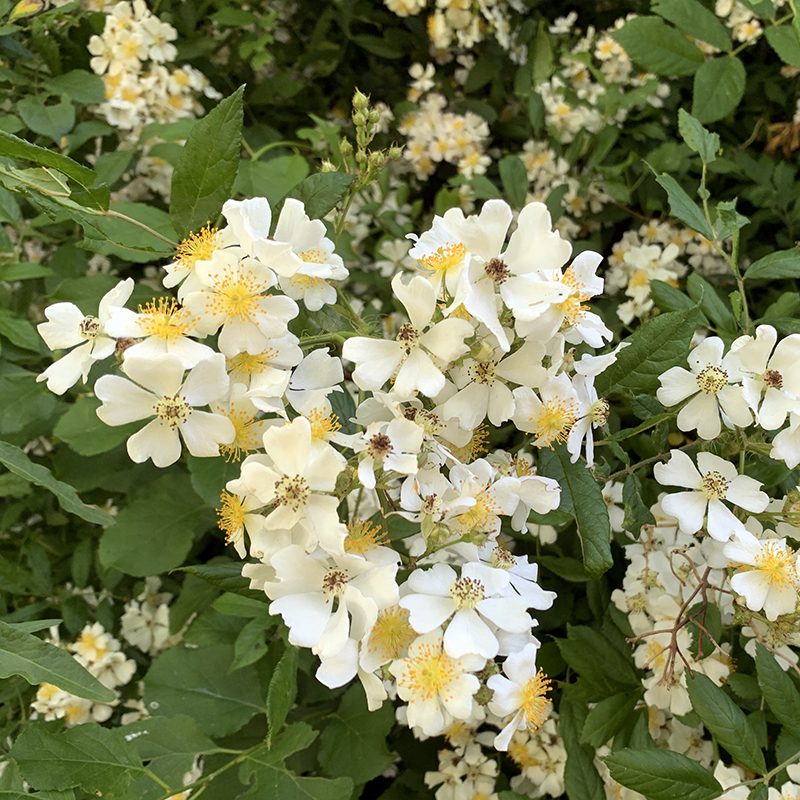
Subscribe To Our Newsletter
Sign up for our weekly email about sales and events.
